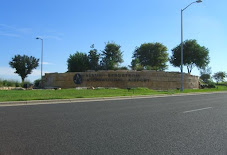An IP address (Internet Protocol address) is a unique address that certain electronic devices use in order to identify and communicate with each other on a computer network utilizing the Internet Protocol standard (IP)—in simpler terms, a computer address.
IP addresses are managed and created by the Internet Assigned Numbers Authority (IANA). The IANA generally allocates super-blocks to Regional Internet Registries, who in turn allocate smaller blocks to Internet service providers and enterprises.
IPv4
The Internet Protocol (IP) has two versions currently in use (see IP version history for details).
IPv4 only uses 32-bit (4-byte) addresses, which limits the address space to 4,294,967,296 (232) possible unique addresses. However, many are reserved for special purposes, such as private networks (~18 million addresses) or multicast addresses (~270 million addresses). This reduces the number of addresses that can be allocated as public Internet addresses, and as the number of addresses available is consumed, an IPv4 address shortage appears to be inevitable in the long run. This limitation has helped stimulate the push towards IPv6, which is currently in the early stages of deployment and is currently the only contender to replace IPv4.
IPv4 addresses are usually represented in dotted-decimal notation (four numbers, each ranging from 0 to 255, separated by dots, e.g. 147.132.42.18). Each range from 0 to 255 can be represented by 8 bits, and is therefore called an octet. It is possible, although less common, to write IPv4 addresses in binary or hexadecimal. When converting, each octet is treated as a separate number. (So 255.255.0.0 in dot-decimal would be FF.FF.00.00 in hexadecimal.)
Subnetwork
Currently, three classes of networks are commonly used. These classes may be segregated by the number of octets used to identify a single network, and also by the range of numbers used by the first octet.
Class A networks (the largest) are identified by the first octet, which ranges from 1 to 126.
Class B networks are identified by the first two octets, the first of which ranges from 128 to 191.
Class C networks (the smallest) are identified by the first three octets, the first of which ranges from 192 to 223.
Tuesday, March 18, 2008
Subscribe to:
Post Comments (Atom)
beach

cottesloe beach restaurant
City of Perth

view from King's park
Houston TX

San antonio


















No comments:
Post a Comment